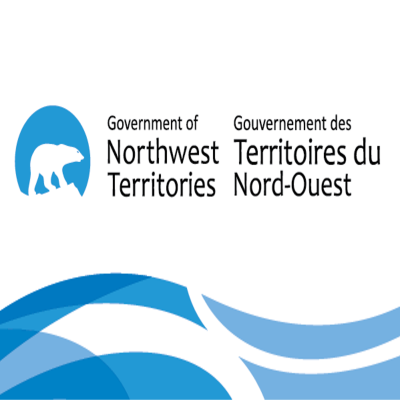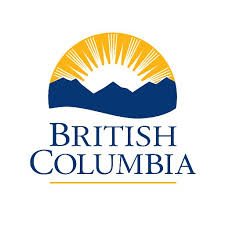utilitiesCommunication
Type of resources
Available actions
Topics
Keywords
Contact for the resource
Provided by
Years
Formats
Representation types
Update frequencies
status
Scale
-

UTC - Utility and communication networks (utilitiesCommunication) Energy, water and waste systems, and communications infrastructure and services. For example, resources describing hydroelectricity; geothermal, solar, and nuclear sources of energy; water purification and distribution; sewage collection and disposal; electricity and gas distribution; data communication; telecommunication; radio; and communication networks.
-
OR_fraveita er byggt upp af línum (lögnum), punktum (búnaði) og flákum (settjörnum).
-

The Remote Communities Energy Database is a public resource that provides pertinent factual information about the generation and use of electricity and other energy sources for all remote communities in Canada. Communities are identified as remote communities if they are not currently connected to the North-American electrical grid nor to the piped natural gas network; and is a permanent or long-term (5 years or more) settlement with at least 10 dwellings. The Remote Communities Energy Database is the only national data source on energy in remote communities that is publically available on one centralized site. The Remote Communities Energy Database allows users to search and conduct analyses of remote communities and their energy context. Users are also able download the data from the Remote Communities Energy Database dataset in CSV (i.e., excel compatible) format. This data is collected from a number of sources including the remote communities themselves, local utilities, provincial and territorial government’s, Indigenous and Northern Affairs Canada (INAC), Statistics Canada, Natural Resources Canada (NRCan) and various other stakeholders.
-

Vefsjá Fjarskiptastofu er hugsuð til upplýsinga fyrir alla sem vilja kynna sér stöðu og þróun fjarskiptauppbyggingar á Íslandi hvort sem um er að ræða tengingar heimila og fyrirtækja við ljósleiðara eða uppbyggingu farneta á landsvísu. Meðal þess sem skoða má í vefsjánni er: - Fjarskiptaaðgengi staðfanga (heimila og fyrirtækja) um fastanet þar sem þekja sýnir staðföng landsins í punktaformi. - Fjarskiptaaðgengi um farnet þar sem sjá má þekju sem sýnir gæði farnetssambands á staðföngum landsins. - Útbreiðsla 2G, 3G, 4G og 5G sem sýnir áætlaða útbreiðslu farnetsmerkis allra fyrirtækja. - Samband á stofnvegum þar sem sjá má alla vegakafla þar sem samband næst frá einhverjum markaðsaðila. - Farnetsmælingagögn úr mælingum á 4G. Hægt að skoða alla mælipunkta á kortinu. - Þá eru í fyrsta sinn birtir mælikvarðar sem Háskóla-, iðnaðar- og nýsköpunarráðuneytið hefur sett fyrir uppbyggingu ljósleiðara í byggð og uppbygging farneta á stofnvegum landsins. Fjarskiptamælikvarði: Þéttbýlisstaðir og byggðarkjarnar landsins sýndir sem flákar á korti. Þeir sem náð hafa 80% ljósleiðaraútbreiðslu eru litaðir grænir og þeir sem ekki hafa náð því markmiði eru litaðir á litaskala eftir stöðu. Fjarskiptamælikvarði: Sýnir stofnvegi landsins sem línur á korti. Þeir kaflar stofnvega sem ekki eru dekkaðir af 10 Mb/s farneti eru litaðir rauðir. Þeir kaflar sem bæst hafa við vegna samnýtingar eru litaðir í einkennandi lit.
-

Þekjan sýnir raforkudreifisvæði fyrir dreififyrirtæki landsins: Veitur, Orkubú Vestfjarða, HS Veitur, Norðurorka og RARIK. Hjá Orkubú Vestfjarða og RARIK er svæðunum einnig skipt upp í dreifbýli, þéttbýli og byggðarkjarna sem endurspeglar skiptingu í gjaldskrá hjá þessum fyrirtækjum.
-

High voltage electrical transmission lines for distributing power throughout the province. Lines were derived from several data sources representing unique inventories: BC Hydro, Private, Independent Power Producers, and Terrain Resource Information Management (TRIM). Voltage information is not currently available on the public version of this dataset as per publication agreement with BC Hydro.
-
Förskolornas geografiska punkt tas fram med hjälp av det Allmänna företagsregistret samt Geografidatabasen. Branschkoden som används är SNI 85100 (Förskola).Geografisk information är belägenhetsadress på arbetsställe. Data avser perioden december 2023 till maj 2024.
-
Depåer inom Sydlänen, där material för att bekämpa skogsbränder finnes att hämta ut.
-
Datamängden redovisar placeringar av nödtelefon nere i Trafikverkets säkerhetsklassificerade vägtunnlar. Data of Emergency call points in underground tunnels administrated by Swedish Transport Administration. The tunnels are security classified.
-
Myndighets- och kommunkontorens geografiska punkt tas fram med hjälp av det Allmänna företagsregistret samt Geografidatabasen. De juridiska formerna som används är 82 (Kommuner), 83 (Kommunalförbund), 84 (Regioner), 85 (Allmänna försäkringskassor) och 89 (Regionala statliga myndigheter). Geografisk information är belägenhetsadress på arbetsställe. Data avser perioden december 2023 till maj 2024.
 Arctic SDI catalogue
Arctic SDI catalogue